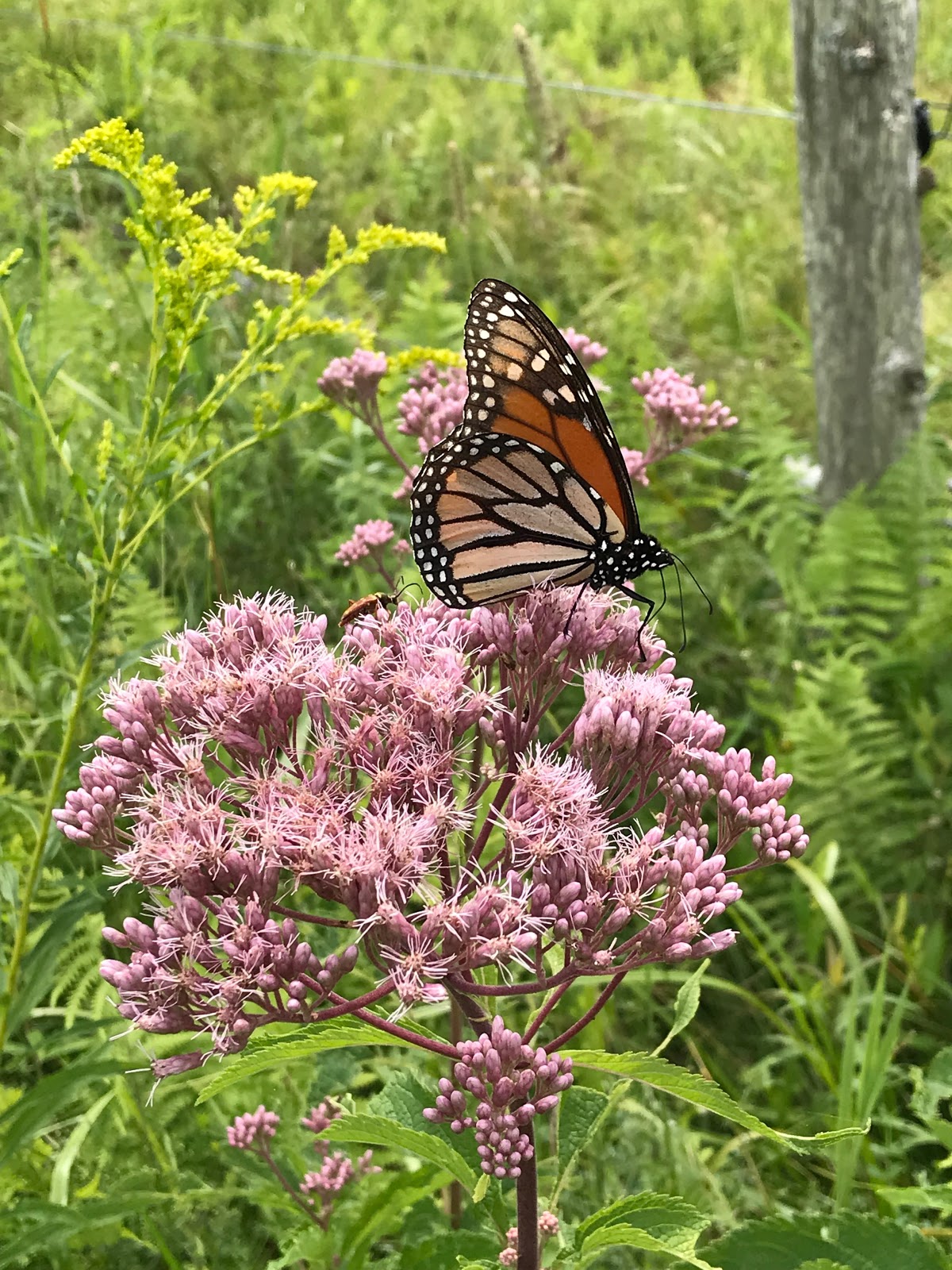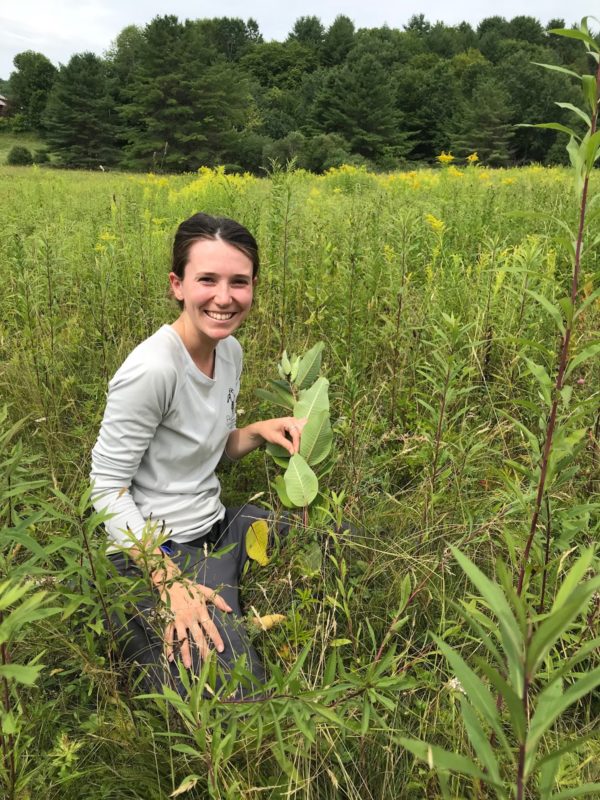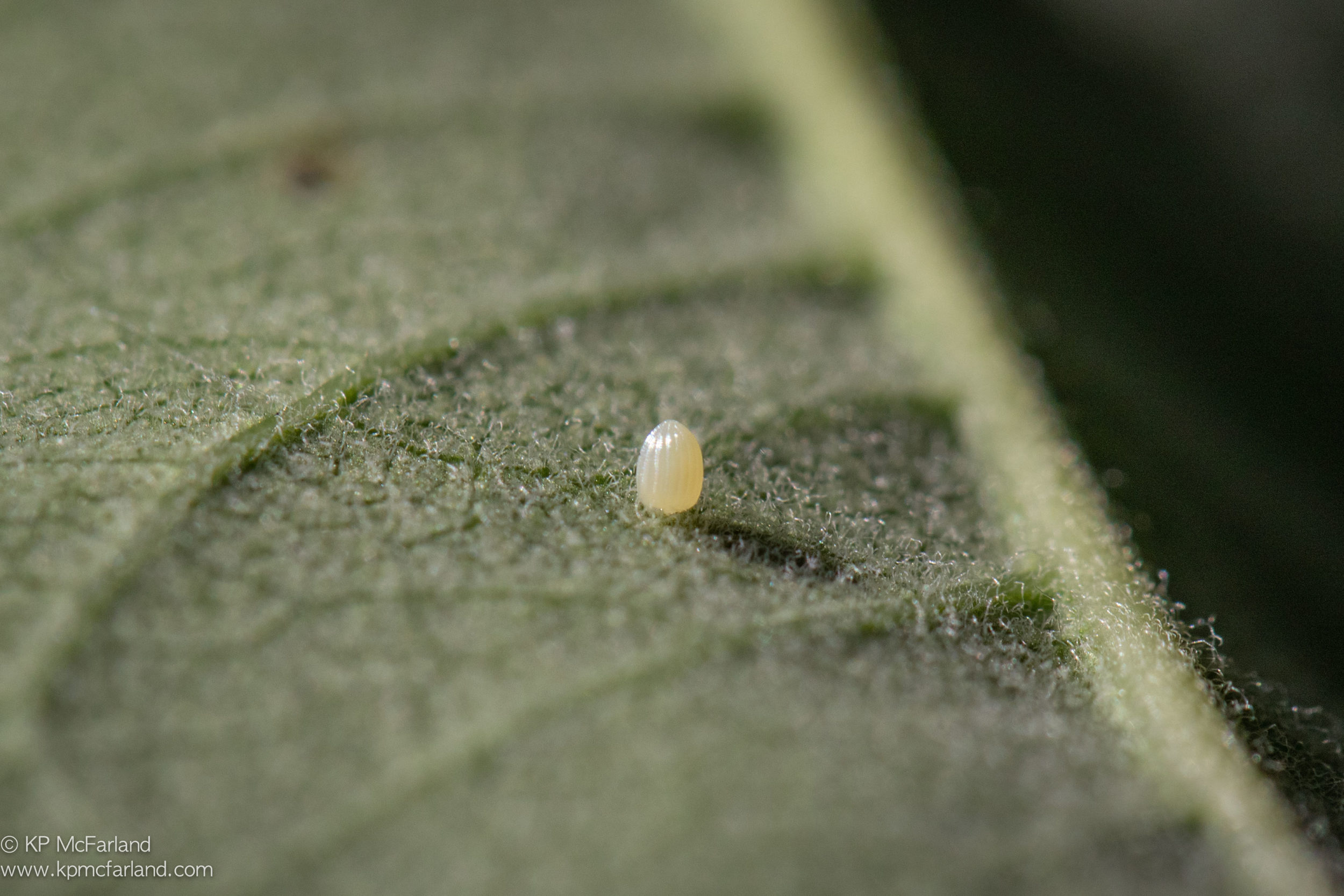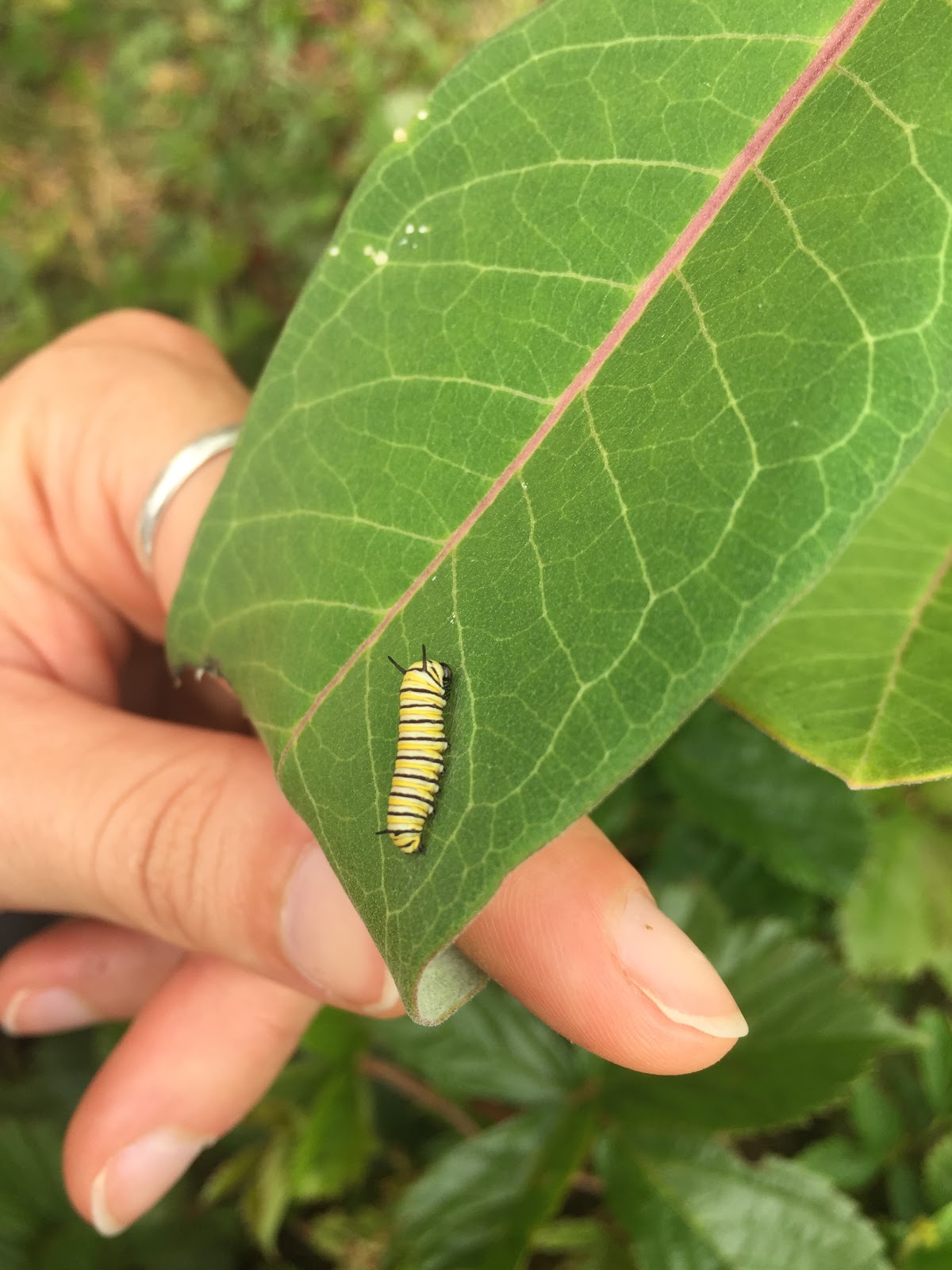By Tara Rodkey, VCE’s Alexander Dickey Conservation Intern
“No! They mowed it!” yells Kent, driving around the lot. We scan for any patch of grasses that might have escaped, but the field had been mowed all the way up to the border with the road, and the smell of fresh-cut grass hung heavy in the air. No milkweed. No Monarchs.
What had been promised to be an easy venture had turned into something of a quest. It was the International Monarch Monitoring Blitz, an effort spearheaded by Mission Monarch partners, the week of July 28th, to involve citizen scientists across North America in submitting milkweed and monarch observations. Kent McFarland, Vermont Center for Ecostudies’ conservation biologist, or self-dubbed “butterfly guy,” had agreed to take fellow summer intern Alex Kulungian and me out into the field to teach us how to look for these regal insects. Finding milkweed, the Monarch’s host plant, was the first step. And with “weed” in the name, none of us anticipated that finding it would present much of a challenge.
Yet, after more than an hour of circling Norwich by car, all of Kent’s sure spots were exhausted, and I still didn’t know what a milkweed plant even looked like. The town of Norwich seemed to have been struck by a mowing fever, and all of the patches that Kent had remembered spotting on his commute to work were no more. Now we were forced to call in the reinforcements—Chris Rimmer, Executive Director of VCE and Norwich local—for some leads on where the elusive weed might still be found. “Ok,” Kent says as he hangs up the phone, “there might be some more fields we can check, back up the road we just came from.”
By now the morning had slipped away from us and it was hot, the sun creeping up to its high noon seat. A group of cattle look at us disinterestedly from a far hillside as we roll up to the pasture. We hop out of the car to take a look around, and, lo and behold, there it is! Our first milkweed patch—just behind the electric fence of someone’s property line.
Quite a distinctive plant, Common Milkweed is the most widespread of the milkweed species in Vermont. Bright green, with a thick wine-tinged stalk and broad opposite leaves that taper to a neat point, it has a simple elegance about it. In early summer the plants blossom with frothy pink clusters, that by now, August, have turned into long ribbed seed pods—poised to begin the cycle anew. But I didn’t know any of this until today, looking at milkweed up close for the first time, the three of us leaning gingerly over the charged wire.
Pulling one of the milkweed stems close to the fence, Kent lifts the leaves and demonstrates how we would look for Monarch eggs and larvae, giving a once-over to the underside of each leaf, from the bottom to the very top of the stem. We decide to count these inconveniently-placed plants before resigning ourselves to return to our to-do’s at the office, empty-handed. The three of us in our rubber boots crouching next to a cattle fence, peering at a common weed must have made a pretty curious sight, and a man who had been mowing a neighboring pasture had parked the mower and started walking towards us. We prepared to explain ourselves, and why we were examining this property line so intently, but as soon as we said we were looking for Monarchs, his interest was piqued. And then he said something along the lines of:
— My wife and I have a patch on our property we hold off mowing every year for the Monarchs, you could go take a look if you want.
Finally! Our excitement at being invited to rummage his field after a morning of fruitless endeavor was surely apparent. The landowner, Eric, chatted with Kent as he walked us over—this was the kind of spot we had been looking for all morning, as hundreds of the plants rose above the grass. And we wasted no time getting down on our hands and knees to start looking under leaves. One adult Monarch fluttered between us, a flash of orange traveling haphazardly across the field as we searched for the eggs she may have hidden amongst the stems. After checking a few dozen, there it was—a single tiny egg. The color of pale butter, the egg has an elegant dome shape coming to an ever-so-slightly pointed tip, with ridges running along the length. A perfect little structure—and the one I’d been anxious to see for myself all morning.
Before letting our other obligations pull us back to the office, we spend the rest of the hour exploring the patch under the noontime sun. We turn up several more eggs, along with some other charismatic insects that make the tall milkweed their home: Shamrock Orbweavers and the elegantly antennaed Red Milkweed Beetle. On our path back to the car, we spot the carnivalesque stripes of a Monarch caterpillar, munching away in his jester’s costume. Soon, transition by transition, this caterpillar will find its wings and begin its unique generational journey, ready to start the cycle anew.





Cool article……………..all is well that ends well. Nice photos too.
We are purposely cultivating milkweed in our meadows. We were rewarded last summer with Monarch adult and caterpillars. In fact, my niece and her boyfriend found an adult emerging from its chrystalis.
We’re down in Windham – but you have an open invitation to check out our milkweed patches!
I have experienced the mowing down of milkweed when Monarch caterpillars need it so am on a quest to have it stopped or rather that it be mowed at better times of the year. Last year I found 1 egg, brought it home and a week later the area where it was found was mowed to the ground. Because I have milkweed growing in my garden the egg became a beautiful female Monarch, even through she became a poster child it didn’t go far to saving the milkweed. As with many of us 2018 has turned out to be a great year for Monarch sightings – found eggs on the weekend so I wrote to council and our councilor with a request not to mow the areas where there is milkweed until mid to late September . the plan is to mow next week because someone called to say the grasses where bothering their allergy… I included photos of eggs (found on weekend) and an egg now chrysalis, found earlier in the month. Am asking others to stand with me not behind pushing me and write to their council and councilor too. Now I wait to see what will happen or if after four years to trying to stop the mowing at wrong time of year, will stop.
I’m happy to see that other people remain determined in their environmental missions. I do environmental volunteer work in view of other people as much as I can so they can ask questions and see that I don’t give up.
I remove ripe milkweed pods, without trespassing, in places where pesticides are sprayed and there is sporadic weed-wacking. I take any eggs and caterpillars too and bring them to places that are established as safe, like my own yard. I volunteer to do yard work for nonprofits and neighbors who let invasive plants grow or who damage native species. That gives me the chance to have some influence in removing invasives and taking care of the native species myself. I learned how to prune trees and shrubs to improve their health and appearance. That goes a long way toward keeping them from being cut down in haste. Keep up the good work everyone!